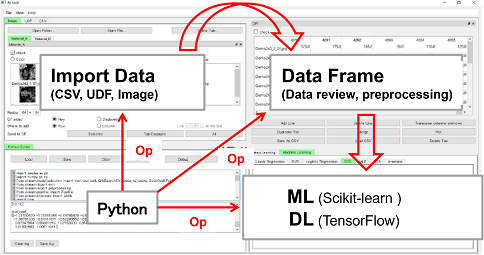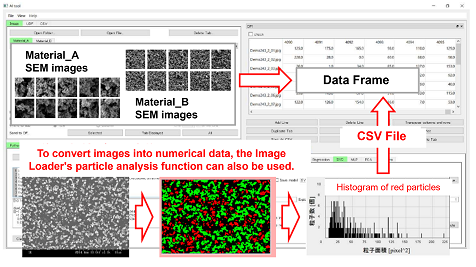AI Tool
AI Tool has functions for creating data frames by extracting data sequences from analysis results and image files obtained by OCTA's simulation engines, and for analyzing data from data frames using machine learning and deep learning. Not only simulation data, but also experimental data and images can be used as data.
The results obtained by using OCTA's simulation engine (UDF data) are stored in a complex array structure of multiple arrays and nested arrays, but by using the data frame creation function, they can be converted into two-dimensional array data (numerical data) that can be used in machine learning.
It is also possible to process the calculation results to calculate the necessary properties and create a data frame.
In addition to OCTA simulation result files, microscope image files and CSV files are also supported.
The data analysis function provides templates for machine learning and deep learning, so machine learning and deep learning can be performed through GUI operations without writing scripts. For machine learning, Scikit-learn can be used, and for deep learning, TensorFlow/Keras can be used.

